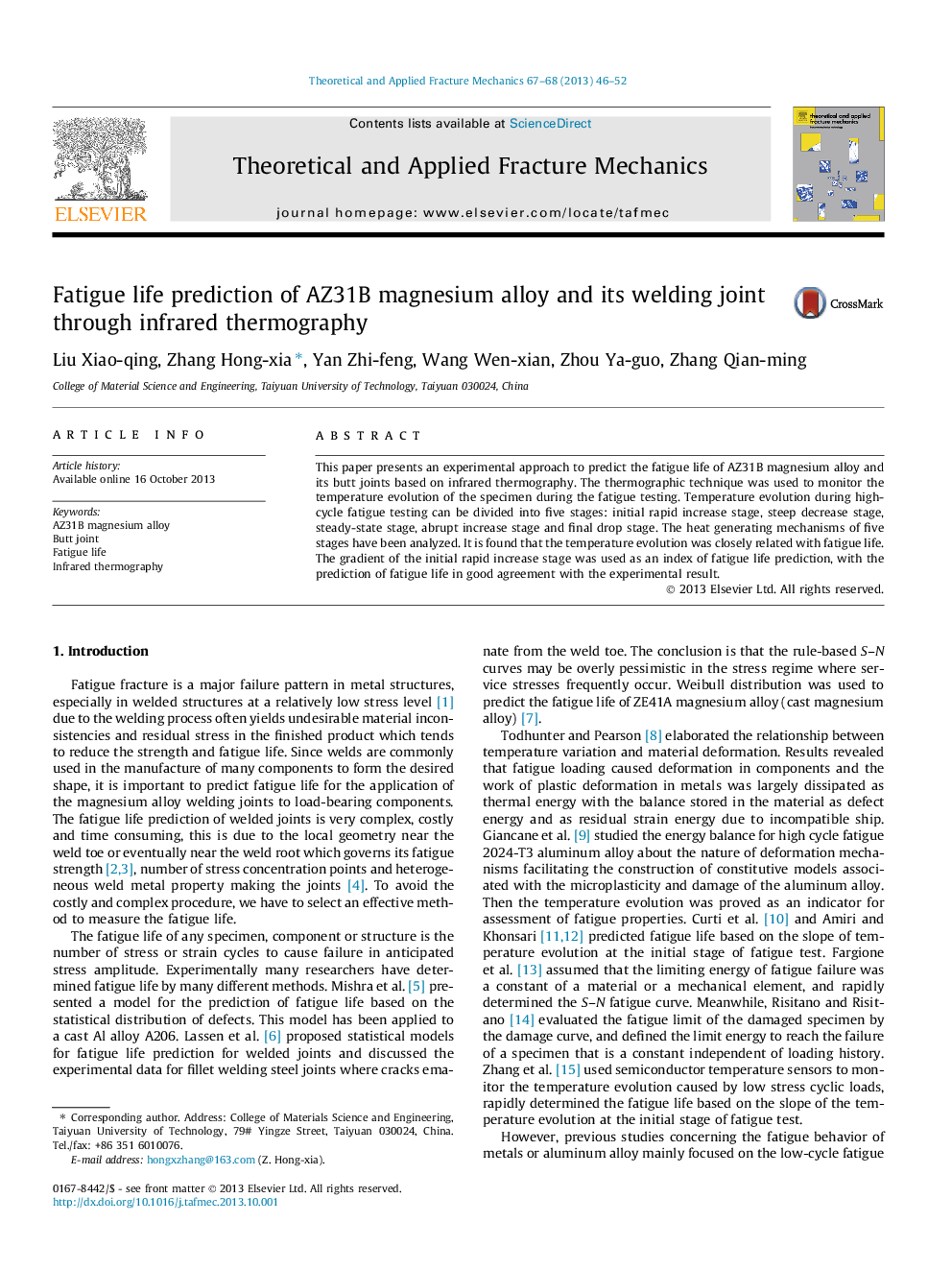| Article ID | Journal | Published Year | Pages | File Type |
|---|---|---|---|---|
| 807150 | Theoretical and Applied Fracture Mechanics | 2013 | 7 Pages |
•The temperature evolution of AZ31B magnesium alloy and its welded joint were tested in high-cycle fatigue.•We proposed an experimental approach based on infrared thermography to predict fatigue life.•There is only one parameter in the proposed model and the parameter is material and temperature dependent.
This paper presents an experimental approach to predict the fatigue life of AZ31B magnesium alloy and its butt joints based on infrared thermography. The thermographic technique was used to monitor the temperature evolution of the specimen during the fatigue testing. Temperature evolution during high-cycle fatigue testing can be divided into five stages: initial rapid increase stage, steep decrease stage, steady-state stage, abrupt increase stage and final drop stage. The heat generating mechanisms of five stages have been analyzed. It is found that the temperature evolution was closely related with fatigue life. The gradient of the initial rapid increase stage was used as an index of fatigue life prediction, with the prediction of fatigue life in good agreement with the experimental result.
